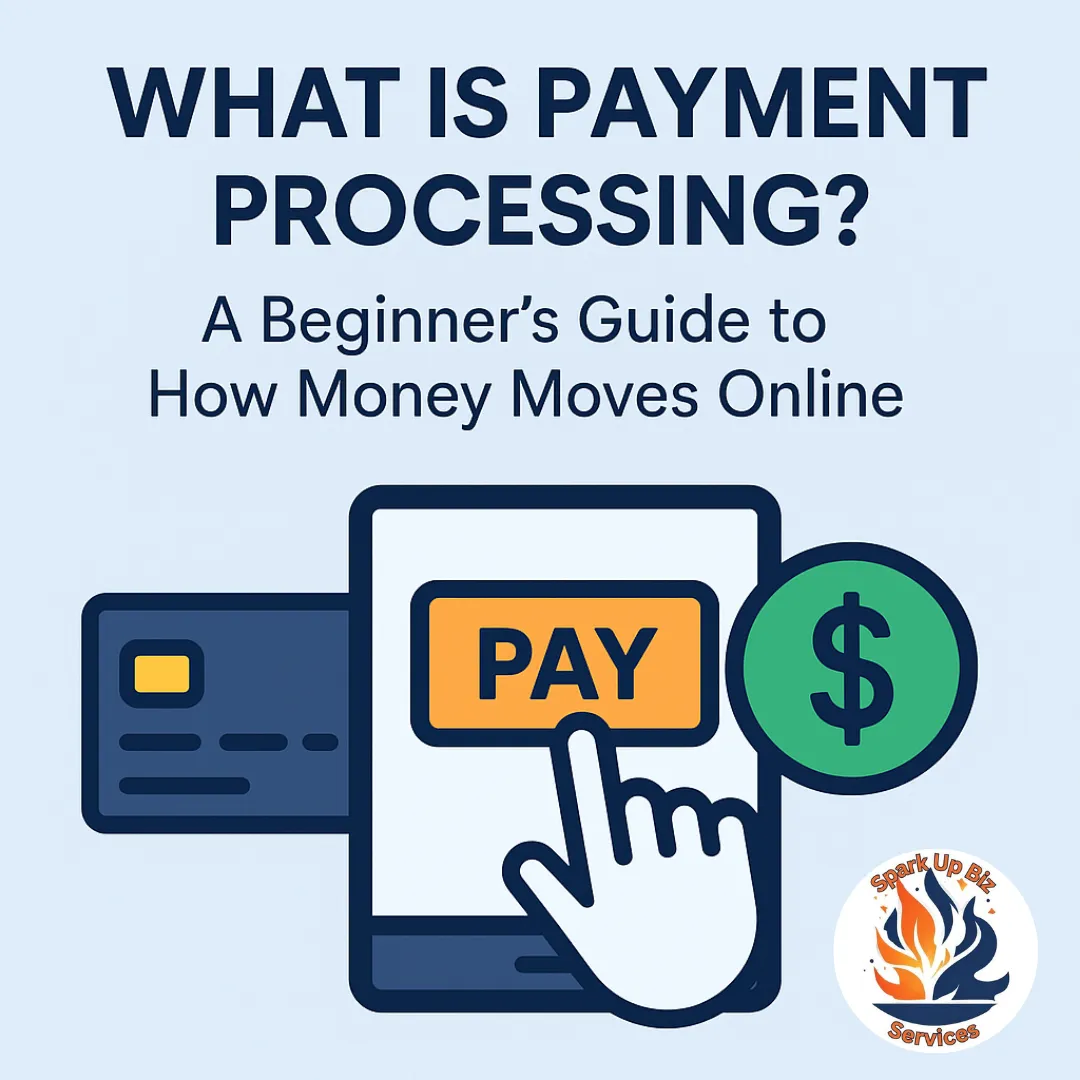Our Latest Articles

Discover how payment processing works behind the scenes—who’s involved, how data moves, and what technologies power every swipe, tap, or click. Perfect for business owners, developers, and curious consumers.
The Silent Engine Behind Every Purchase
"You swipe your card, the screen flashes ‘Approved,’ and the transaction is done. But what just happened?"
In today’s cashless economy, digital transactions are second nature. From mobile wallets and credit cards to crypto checkouts, payment processing silently powers modern commerce.
Behind each simple swipe lies a labyrinth of secure communications, compliance checks, and financial routing. For businesses, understanding payment processing isn’t just helpful—it’s vital. It affects cash flow, customer experience, fraud protection, and even compliance with data regulations like PCI-DSS or GDPR.
In this guide, we’ll take you on a journey through the intricate world of payment processing—covering its core mechanics, major players, security concerns, types of processors, and how to choose the right solution for your business.
What Is Payment Processing?
Payment processing refers to the technology and service infrastructure that enables the electronic transfer of funds between a customer and a business. It ensures that payment data is captured, verified, transmitted securely, and then settled between financial institutions.
A typical transaction involves multiple parties, secure communications, and regulatory protocols—all completed in a matter of seconds.
Whether a consumer pays in-store via a physical point-of-sale (POS) terminal or online via a checkout form, the core steps remain remarkably consistent.
The Core Components of a Payment Transaction
Every digital transaction involves these fundamental components:
1. Authorization
This is when the transaction begins. The customer's payment data is captured and sent to the issuing bank to determine whether they have sufficient funds or credit available.
2. Authentication
Banks use tools like CVV verification, 3D Secure, and biometrics (in the case of mobile payments) to verify the identity of the cardholder.
3. Clearing
If the payment is approved, it’s placed in a batch with other transactions. These are sent later to financial institutions for processing.
4. Settlement
Money is officially transferred from the issuing bank (the customer’s bank) to the acquiring bank (the merchant’s bank), typically within 1–3 business days.

Who Are the Key Players?
1. The Customer
The person initiating the payment—using a card, mobile app, or online form.
2. The Merchant
The business that receives the payment.
3. The Payment Gateway
A technology layer that encrypts and transmits payment information from the merchant to the payment processor or bank.
4. The Payment Processor
An intermediary service that routes data between the merchant, issuing bank, and acquiring bank.
5. The Issuing Bank
The bank or credit union that issued the customer's card and holds their account.
6. The Acquiring Bank
The merchant’s bank account provider. It receives the funds after settlement.
7. Card Networks
Companies like Visa, Mastercard, American Express, and Discover that facilitate communication between banks and processors.
How Does Payment Processing Work? (Step by Step)
Let’s break it down using a common scenario—buying a coffee using a debit card.
Step 1: Customer Initiates the Payment
They insert, swipe, tap, or enter their card details on a point-of-sale terminal or website.
Step 2: Transaction Data Is Captured
The merchant’s POS or e-commerce platform sends the information to a payment gateway.
Step 3: Data Encryption and Transmission
The payment gateway encrypts the card details and transmits them securely to the payment processor.
Step 4: Communication with the Issuing Bank
The processor forwards the information to the issuing bank via the card network (e.g., Visa or Mastercard).
Step 5: Approval or Decline
The issuing bank checks for available funds and potential fraud. It sends back an “approved” or “declined” message.
Step 6: Authorization Reaches the Merchant
The approval allows the merchant to complete the sale.
Step 7: Clearing and Settlement
At the end of the business day, transactions are sent for settlement. Funds are routed to the merchant’s account.

Different Types of Payment Processing Methods
1. Card-Based Payments
These are the most common. They include:
Credit cards
Debit cards
Prepaid cards
Business expense cards
2. Digital Wallets
Such as Apple Pay, Google Pay, Samsung Pay. These use tokenized card data and biometric security.
3. Mobile Payments
App-based payments that use QR codes or P2P transfers.
4. ACH Transfers
Used in the U.S., Automated Clearing House transfers allow direct bank-to-bank payments.
5. Wire Transfers
Used for large transactions, usually international or B2B.
6. Buy Now, Pay Later (BNPL)
Otherwise called consumer financing. There are several options out there.
7. Cryptocurrency Payments
Emerging option using Bitcoin, Ethereum, or stablecoins. Volatility and compliance remain concerns.
Online vs In-Person Payment Processing
Online:
Payment gateways are mandatory.
More prone to fraud.
Requires PCI-DSS compliance.
In-Person:
Involves POS systems or mobile terminals.
Easier for ID verification.
Lower fraud risk.
Security and Compliance: What You Must Know
PCI-DSS Compliance
The Payment Card Industry Data Security Standard is a set of rules that all merchants must follow if they accept card payments. It includes:
Encrypting cardholder data
Regular vulnerability testing
Access control measures
Fraud Detection Tools
Many processors use:
AI-driven pattern recognition
Geolocation checks
Device fingerprinting
3D Secure (Verified by Visa, Mastercard SecureCode)
Tokenization
This replaces sensitive data (like card numbers) with a unique token that is meaningless if breached.
End-to-End Encryption
From the moment a card is swiped, the data is encrypted, preventing exposure even within internal systems.
Choosing the Right Payment Processor
Key Considerations:
Fees: Are they flat or percentage-based?
Setup Time: How quickly can you go live?
Security Features: Do they include tokenization, 3D Secure, and fraud screening?
Settlement Time: When will you get paid?
Customer Support: 24/7 live assistance or ticketing?
Platform Compatibility: Will it work with your website or POS?
Common Fees You’ll Encounter

Payment Processing for Specific Business Models
E-commerce Stores
Needs include recurring billing, multi-currency support, fraud tools, and integration with Shopify or WooCommerce.
Subscription Businesses
Requires automatic billing, dunning management, and invoice customization.
SaaS Companies
May need metered billing, usage-based pricing models, and integration with CRMs and analytics tools.
Restaurants and Retail
Focuses on tip handling, split payments, mobile checkout, and syncing with inventory.
The Future of Payment Processing
AI and Machine Learning
Predictive fraud detection, personalized payment experiences, and real-time risk scoring.
Real-Time Payments
Services like FedNow in the U.S. and SEPA Instant in Europe promise immediate transfers.
Embedded Payments
Integrated checkout in social media and super apps like Instagram Shops and WeChat.
Open Banking APIs
Let users pay directly from their bank without cards, reducing fees and fraud.
Sustainable Payments
Providers like Stripe Climate offer options to offset carbon from every transaction.
Conclusion: Why Payment Processing Should Be a Priority
From checkout to payout, the entire flow of money depends on your payment processor. For businesses, choosing the right provider means faster cash flow, fewer chargebacks, better conversion rates, and a smoother customer experience.
Understanding payment processing is no longer optional—it's mission-critical.
If you're launching a new business or scaling an existing one, invest time in choosing the right stack. The tools and partners you pick now will shape your brand's trust, profitability, and scalability tomorrow.
FAQs
What is a merchant account?
A business account used to receive card payments.
What’s the difference between a gateway and a processor?
A gateway captures data. A processor moves it between banks.
Are mobile payments secure?
Yes, especially with tokenization and biometrics like Face ID or fingerprint.
What happens during a chargeback?
The bank refunds the customer, and you may be debited the funds and a fee unless you successfully dispute it.


